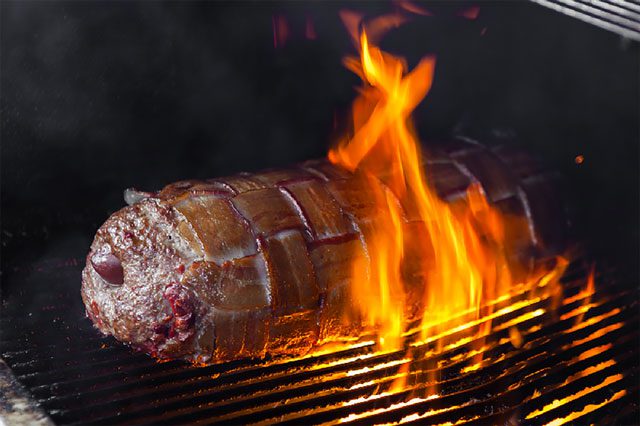
Photo by Chris Humphrey Photographer.
[dropcap]The[/dropcap] answer to that question could be a number of things.
“We’re right in the heartland,” says Nick Corcoran, pit master at Burn Co. Barbeque in Tulsa. “We’re right between pig country and cow country, so we get the best of both worlds. We’re also right between Kansas and Texas, two known barbecue meccas as well, so we get a melding of those two pots.”
Location certainly has a hand in play, but there are other factors as well. Oklahoma has access to some of the best wood used for barbecuing, a willingness to share knowledge to make everyone better and versatility.
“I think what makes Oklahoma barbecue so good is we adapt,” says Joe Davidson, owner of Oklahoma Joe’s Smokers and Oklahoma Joe’s Bar-B-Q. “Oklahoma barbecuers adapt and are constantly learning. We’re harder workers than other people are – if you want to be the best in the world, you have to work really hard at it.”
Whether you’re new to barbecue, a seasoned hand or just a fan of the food, you’re in the right place: The heartland of barbecue.
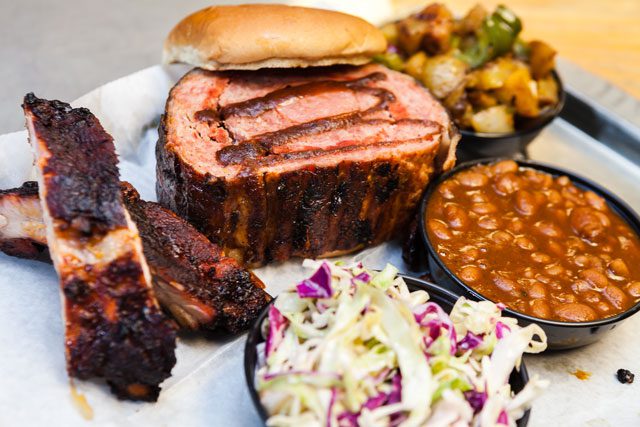
photo by Chris Humphrey Photographer.
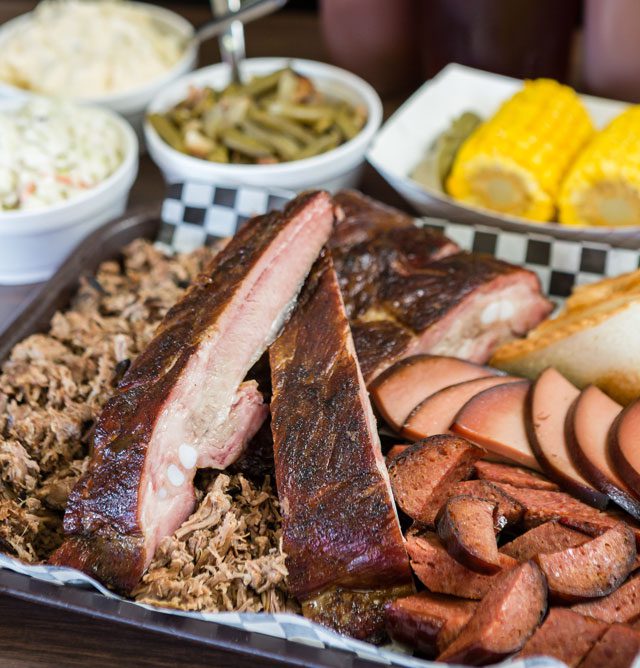
photo by Brent Fuchs.

Photo by Chris Humphrey Photographer.
A Spirit of Sharing
Most people might not expect a famous chef to give out his or her best recipes, but the Oklahoma barbecue community has no problem doing just that.
“That’s the spirit of Oklahoma barbecue – sharing things and learning from others,” says Joe Davidson, owner of Oklahoma Joe’s Bar-B-Q. “If someone has some level of success, they’ll share it. They don’t hoard it to themselves; they want everybody to have success. That’s the philosophy of Oklahoma barbecue that’s really unique.”
Oklahomans can get barbecue advice from a variety of sources – many restaurants not only sell barbecue, but talk to customers about how they cook the food they sell. Burn Co. Barbeque even has a meat market so people can come in for their favorite barbecue or try to barbecue it themselves.
Being open isn’t something reserved just for customers, though. Nick Corcoran, pitmaster at Burn Co. Barbeque, says the barbecue community in Oklahoma shares tricks and tips even with competing restaurants – comparing the openness in Oklahoma barbecue with that used by a manufacturer of electric cars.
“If everybody knows everything, then we all get better,” Corcoran says. “Like Elon Musk did with Tesla – he took the patents off everything. You end up with this culture that grows around it, and to use [Burn Co. co-owner Adam Myers’] words: If somebody’s talking about barbecue, our name is going to come up eventually. That’s better for us. It’s better to cultivate that fire than to snuff it.”
Barbecue restaurants are unusual because there often is an element of teaching the customers how the food is cooked, Corcoran says. And while many industries might avoid that type of openness, barbecue is usually an open book for Oklahoma restaurants.
“It’s my favorite part of the job,” Corcoran says. “I’ve worked in other kitchens, I’ve worked in a lot of different parts of restaurants, and my favorite part about waiting tables was always talking to people and getting to know people. This is like that to the nth degree, because people want to come here and learn from you. I think that’s awesome that I’m able to teach people.”
Bringing the Sides to Center
The focus of barbecue may be on the main course, but neglecting the side dishes can lead to a mediocre experience.
“We believe the side items should be just as good as the barbecue,” says Keith Jimerson, owner of Elmer’s BBQ in Tulsa. “The side items are a part of the barbecue experience, and you have to put just as much care into them as anything else.”
A few of the popular side items for barbecue are baked beans, potato salad, coleslaw and green beans – Jimerson says green beans are popular because many people like to have green vegetables with their meals. The restaurant also experiments with new sides, such as macaroni and cheese.
Side dishes don’t have to be completely separate from the main dish. Trimmed slices of meat you might not serve on a plate can be used in the side dishes.
“We put brisket in the beans, and our green beans have chunks of rib meat in them,” Jimerson says. “It flavors it and gives it a different dimension. That way we don’t waste our hard work. Meat is expensive, and we don’t want to throw it into the trash if we can work it into something else.”
So next time you plan on barbecuing, don’t forget to plan and spend some time on the side items.
3 Barbecue Tips
1. Start with a good cut of meat.
As the saying goes, you get out what you put in. If you’re looking for good barbecue, it all starts with the quality of meat you put on the grill. If you’re not comfortable picking the best cut of meat, visit with your local butcher.
2. Think of your flavor profile.
A lot of different factors go into the final
flavor of the barbecue. The rub used to season the meat before cooking, the sauce you use, and even the wood in the fire is important to the taste.
3. Watch the time and temperature.
The temperature of the fire and the time your food cooks differ by the type of meat you’re barbecuing. Tender meats are more likely to be cooked hot and fast to sear the outside while staying tender inside. For tougher meats like briskets, most people prefer using low heat over a longer period of time.

Tough Competition
With all the great barbecue in Oklahoma, it’s not a surprise that competitive barbecuing has taken off in the state, providing fierce, but friendly, contests.
Tulsa attorney Brad Beasley has been participating in barbecue competitions for around five years now. What started out as a casual hobby grew, and he now competes in 25 to 30 contests a year – almost every weekend between March and October. His barbecue team, Big Butts Need Rubbin Too, is currently ranked 38th in the Kansas City Barbecue Society’s 2016 Team of the Year standings.
The Kansas City Barbecue Society is the largest barbecue organization in the world, consisting of more than 20,000 members and hosting barbecue contests around the world. Beasley says KCBS hosts around 550 contests in the U.S. annually, and around another 50 or so in countries around the world. The rules for each competition are the same, and the results are combined to create the rankings for top teams.
Around 12 to 15 Oklahoma barbecue teams will appear in the top 100 teams each year, Beasley says, adding that currently eight teams are included in the top 40 teams. Despite the high level of competitiveness, Beasley says the comradery among the competition is one of the reasons he enjoys the contests.
“The barbecue community is a very friendly community,” he says. “Competitive barbecue is the only activity I’ve ever had anything to do with where you’re truly happy when your competitors are doing well. I think probably the most rewarding aspects of it are the friends and the comradery you have – it’s a great group of people you look forward to seeing each week.”
The competition still matters, though, and Beasley says participating makes people much better barbecue cooks. Most people competing use a combination of rubs – Beasley uses one barbecue rub he makes himself, but, for example, uses four different rubs on his chicken. For one of his sauces, he combines seven different sauces.
The attention to detail in cooking can also result in a better finished product. Barbecue restaurants cook on a mass scale, while competition barbecue cooks are cooking for six judges.
“The preparation time that goes into it is unbelievable,” Beasley says. “Just for chicken, we’re probably spending six, seven or eight hours from preparation to cooking just to turn in six pieces of chicken. So you pay a lot of attention to detail.”
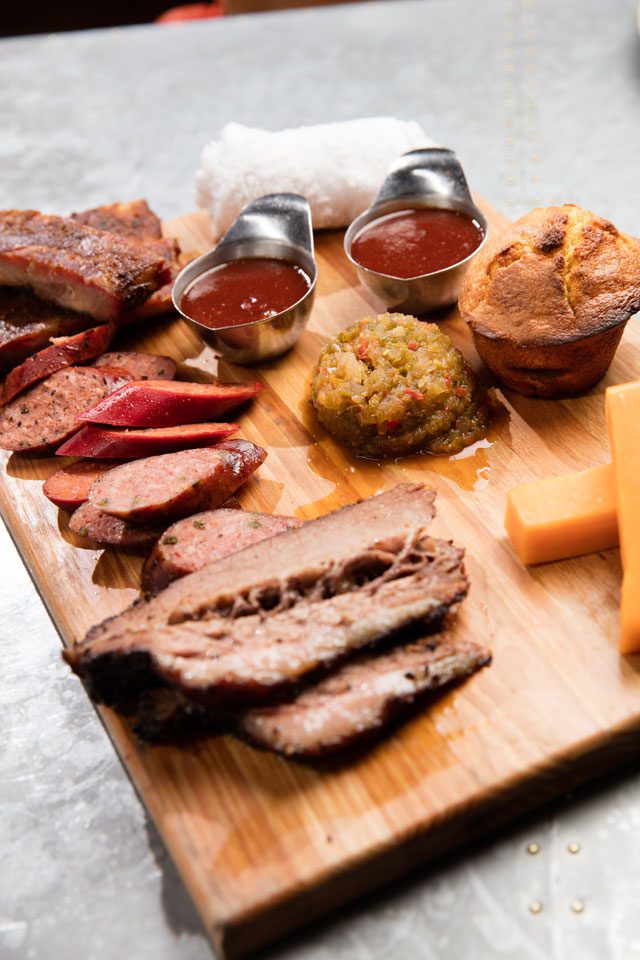
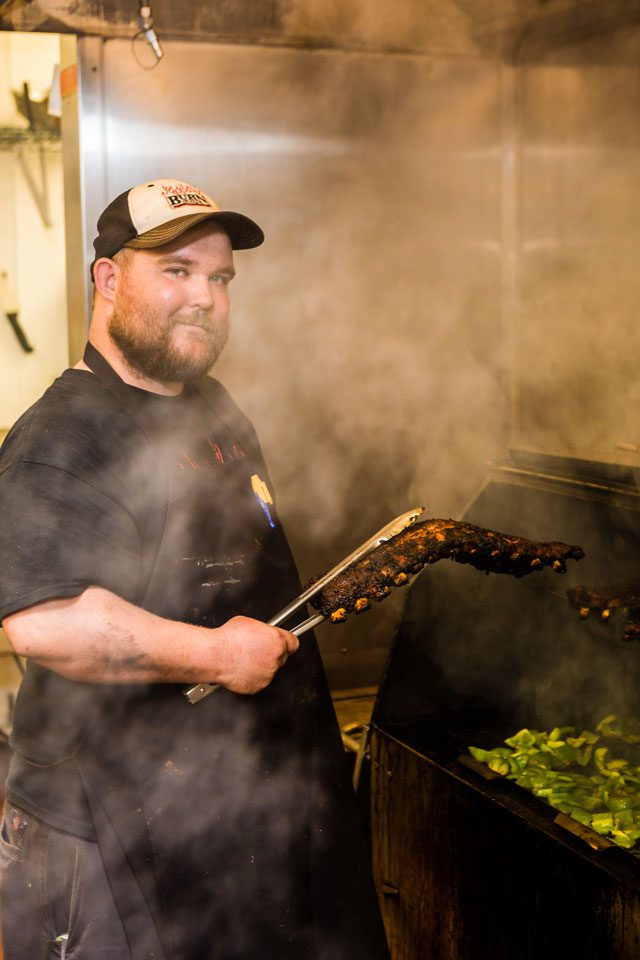
Photo by Chris Humphrey Photographer.
Try Something New
The spice rub and barbecue sauce used on meat are big factors in how the finished meat tastes. While there are many commercial rubs and sauces available, those rubs and sauces can be adapted to create a different taste.
Keith Jimerson, owner of Elmer’s BBQ in Tulsa, says his restaurant creates its own barbecue sauce, which he sells on site, but is always willing to customize sauces to suit someone’s taste.
“We have a sauce for diabetics that’s sugar free,” Jimerson said. “We have some that are super hot that we throw some ghost pepper in. We have people here – they just want the hotter the better. We’ve created some sauces that actually, believe it or not, people use as a salad dressing.”
Paul Schatte, co-owner of Head Country Bar-B-Q, says he encourages people to add new things to the rubs and sauces sold by the company.
“I encourage people to experiment and practice, see what they like,” he says. “They may want to put apple juice in it to give it more of a sheen, or they may want to add a bourbon note. I have a customer who adds pineapple chunks.”
Experimentation isn’t just reserved for sauces, though. Iron Star Urban Barbeque in Oklahoma City started with the concept of combining barbecue with fine dining. The idea was new in Oklahoma – while there may be plenty of barbecue restaurants in the state, a barbecue restaurant with specialty drinks, linen napkins and a full dining experience was unusual in the area.
Kimberly King, general manager of Iron Star Urban Barbeque, says some people said the food wasn’t what they were used to when the restaurant first opened, but over time the restaurant’s distinctive style was embraced by the customers.
“We had to get everyone used to the way we were going to do barbecue,” King says. “Eventually it calmed down, and now people love it because it’s different. Because it’s not the same thing you can get everywhere else.”
BBQ or grilling?
Not all outdoor cooking is the same – while grilling and barbecuing may share some similar components, the two styles are very different.
Grilling uses a direct fire and high heat to cook the meat. Temperatures for grilling start at 325 degrees and can exceed 500 degrees.
Barbecuing uses indirect heat and lower temperatures, relying on constant heat over time to cook the meat while the smoke from the wood used in the fire adds additional flavor.

Fueling the Flavor
Rubs and sauce may be the obvious way to give your barbecue some flavor, but it would be a mistake to ignore the wood used in the fire of your barbecue. The smoke from the fire flavors the meat, and different types of wood can make a major difference In the taste.
“People don’t think of wood as a seasoning, but in barbecue it’s the most important seasoning you’re using,” says Joe Davidson of Oklahoma Joe’s Bar-B-Q.
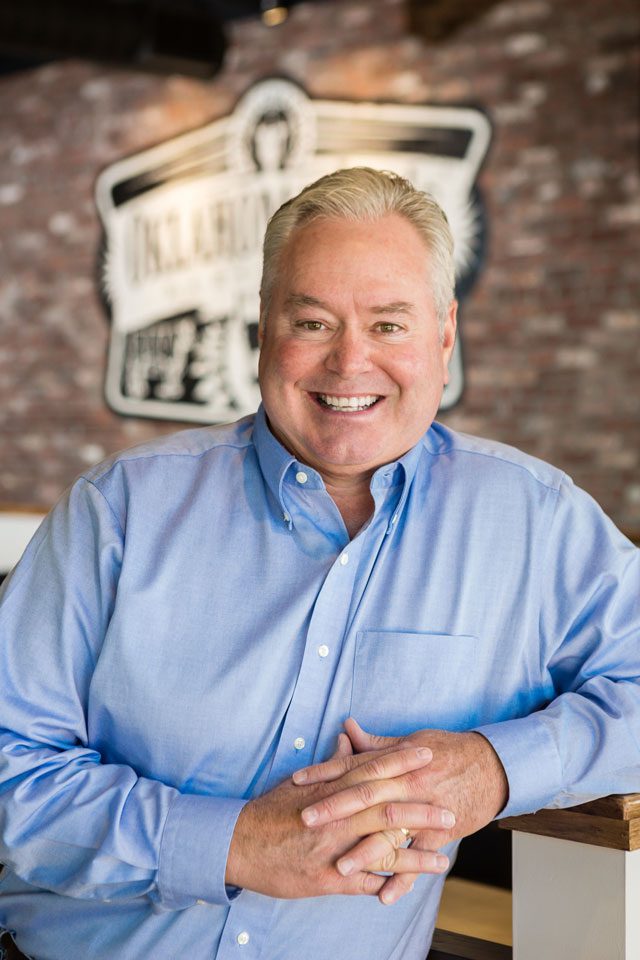
photo by Chris Humphrey Photographer.

While the choices for wood type may not be limitless, they can be overwhelming at first. Many people in Oklahoma choose to use pecan wood, which grows in the state. Other popular choices include mesquite, hickory, oak and apple wood – Davidson says his rule of thumb is any wood that bears a fruit or a nut is suitable for cooking. Avoid softwoods such as pine or spruce, which contain too much sap and can ruin the taste and even make people sick.
Woods such as alder, apple, cherry and maple are more mild woods, best for foods with a lighter flavor that may not be heavily seasoned or sauced, while woods like hickory, mesquite, pecan and oak may work better for foods with a stronger flavor.
Some woods also burn with a thicker smoke or make a better bed of coals, which is important to Elmer’s BBQ owner Keith Jimerson. He serves what he describes as “old school barbecue with an authentic flavor,” and while his choice of wood may vary depending on factors such as the season or the meat being cooked, he likes using hickory and oak.
“Hickory and oak will make the best bed of coals,” Jimerson said. “Whenever you’re barbecuing the meat, you have to look at the bed of coals. The right hardwoods will last a lot longer than softer wood. They also make the meat very flavorful and the smoke is very aromatic.”






















